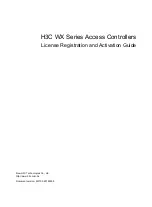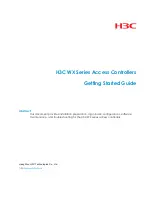Chapter 5 Resets, Interrupts, and General System Control
MC9S08LG32 MCU Series, Rev. 5
74
Freescale Semiconductor
5.4
Computer Operating Properly (COP) Watchdog
The COP watchdog is intended to force a system reset when the application software fails to execute as
expected. To prevent a system reset from the COP timer (when it is enabled), application software must
reset the COP counter periodically. If the application program gets lost and fails to reset the COP counter
before it times out, a system reset is generated to force the system back to a known starting point.
After any reset, the COPE becomes set in SOPT1 enabling the COP watchdog (see
,” for additional information). If the COP watchdog is not used in an
application, it can be disabled by clearing COPE. The COP counter is reset by writing any value to the
address of SRS. This write does not affect the data in the read-only SRS. Instead, the act of writing to this
address is decoded and sends a reset signal to the COP counter.
The COPCLKS bit in SOPT2 (see
Section 5.8.5, “System Options Register 2 (SOPT2)
information) selects the clock source used for the COP timer. The clock source options are either the bus
clock or an internal 1 kHz clock source. With each clock source, there is an associated short and long
time-out controlled by COPT in SOPT1.
summaries the control functions of the COPCLKS and
COPT bits. The COP watchdog defaults to operation from the 1 kHz clock source and the associated long
time-out (2
8
cycles).
Even if your application uses the reset default settings of COPE, COPCLKS, and COPT; you must write
to the write-once SOPT1 and SOPT2 registers, during reset initialization, to lock in the settings. That way,
the settings cannot be changed accidentally if the application program gets lost. The initial writes to SOPT1
and SOPT2 reset the COP counter.
The write to SRS that services (clears) the COP counter must not be placed in an interrupt service routine
(ISR) because the ISR could continue to be executed periodically even if the main application program
fails.
In background debug mode, the COP counter does not increment.
When the bus clock source is selected, the COP counter does not increment while the system is in stop
mode. The COP counter resumes as soon as the MCU exits stop mode.
Table 5-1. COP Configuration Options
Control Bits
Clock Source
COP Overflow Count
COPCLKS
COPT
0
0
~1 kHz
2
5
cycles (32 ms)
1
1
Values are shown in this column based on t
LPO
= 1 ms. See t
LPO
in the data sheet for the
tolerance of this value.
0
1
~1 kHz
2
8
cycles (256 ms)
1
1
0
Bus
2
13
cycles
1
1
Bus
2
18
cycles
Содержание MC9S08LG16
Страница 2: ......
Страница 4: ......
Страница 8: ......
Страница 20: ......
Страница 26: ...Chapter 1 Device Overview MC9S08LG32 MCU Series Rev 5 26 Freescale Semiconductor...
Страница 40: ...Chapter 2 Pins and Connections MC9S08LG32 MCU Series Rev 5 40 Freescale Semiconductor...
Страница 96: ...Chapter 5 Resets Interrupts and General System Control MC9S08LG32 MCU Series Rev 5 96 Freescale Semiconductor...
Страница 296: ...Chapter 12 Serial Peripheral Interface S08SPIV4 MC9S08LG32 MCU Series Rev 5 296 Freescale Semiconductor...
Страница 372: ......


















